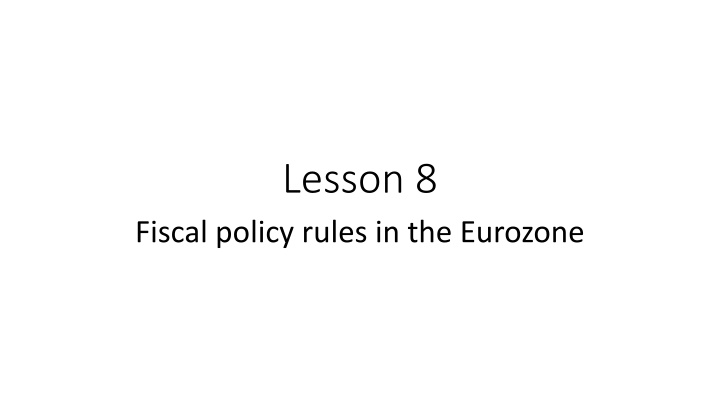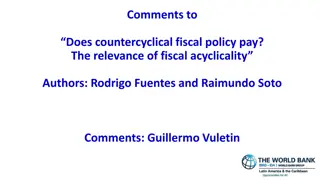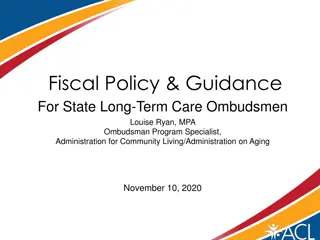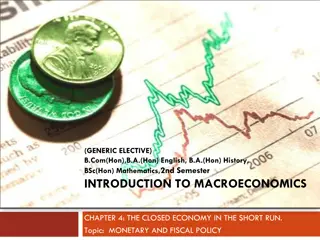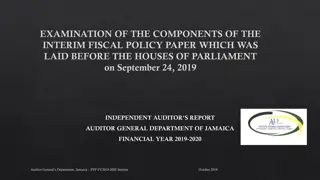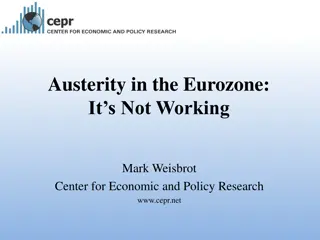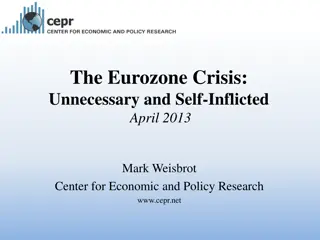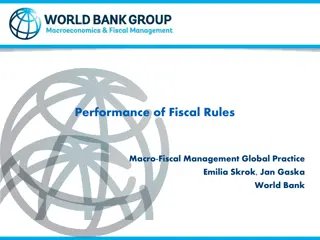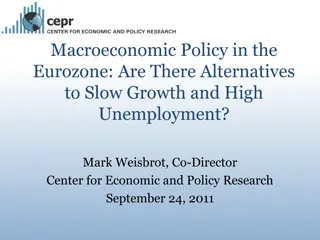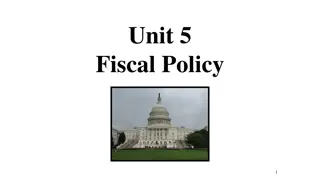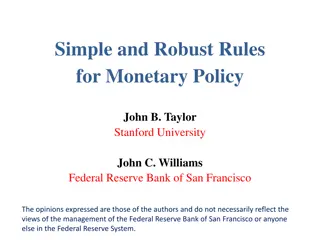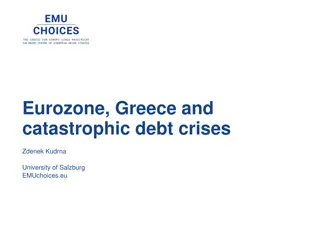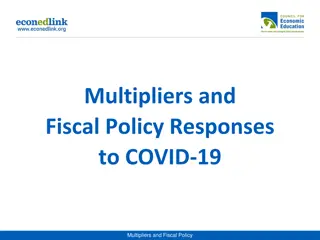Fiscal Policy Rules in the Eurozone
The Maastricht Treaty and Stability and Growth Pact set fiscal parameters for Eurozone countries, with sanctions for non-compliance. The preventive and dissuasive arms aim to maintain sound public finances through deficit and debt limits. The 2005 SGP reform introduced adjustments towards budget balance and tolerability in deficit overruns, considering economic downturns.
Download Presentation

Please find below an Image/Link to download the presentation.
The content on the website is provided AS IS for your information and personal use only. It may not be sold, licensed, or shared on other websites without obtaining consent from the author.If you encounter any issues during the download, it is possible that the publisher has removed the file from their server.
You are allowed to download the files provided on this website for personal or commercial use, subject to the condition that they are used lawfully. All files are the property of their respective owners.
The content on the website is provided AS IS for your information and personal use only. It may not be sold, licensed, or shared on other websites without obtaining consent from the author.
E N D
Presentation Transcript
Lesson 8 Fiscal policy rules in the Eurozone
The Maastricht treaty Signed on 7 February 1992 by 12 European countries Belgium, Denmark, France, Germany, Greece, Ireland, Italy, Luxembourg, Netherlands, Portugal, Spain and the United Kingdom Two out of five of these rules concern fiscal parameters: 1) the public deficit/GDP ratio must not exceed 3% 2) the public debt/GDP ratio must not exceed 60%
Stability and Growth Pact (SGP) It was signed in 1997 and sanctions for those countries not respecting the thresholds. It sets out how to force Eurozone countries to have sound public finances even after the adoption of the common currency aims to establish the procedures and Under the pact a ratio of public deficit to GDP of more than 3% is not to be exceeded except in cases where the contraction in the growth rate of the product, in real terms, had not fallen by more than two percentage points.
Preventive arm Member States submit plans to keep public accounts in order or annual stability programmes. In particular, single governments should have a medium-term objective (MTO) for their budget close to balance or in surplus with the aim of ensuring long-run sustainability of public accounts. The European Commission evaluates and the Council expresses its opinion. If the judgment is negative the commission issues an early warning to prevent excessive deficits and policy advice, suggesting policy recommendations to achieve the goal.
Dissuasive arm If the deficit exceeds 3%, the country is subjected to an excessive deficit procedure (EDP). The EDP defines the time limits within which to implement the public balance adjustments and the penalties for exceeding the limit. The amount of the fine has a fixed component equal to 0.2% of GDP and a variable component equal to 1/10th of the government deficit deviation from the 3% threshold. However, a maximum limit is set for the overall amount of the fine, equal to 0.5% of GDP. If, instead, the state adopts corrective measures promptly, the procedure is suspended until the deficit is brought below the 3% limit. If the same measures prove to be inadequate, the procedure is resumed and the sanction imposed.
2005 SGP reform Two main changes the first defined an adjustment path towards the MTO of the budget balance as 0.5% of potential output in the event of exceeding the deficit threshold of 3% The second change concerned the tolerability of the overrun of the deficit parameter. In the event of severe economic downturns no adjustment path was required to reach the MTO of the public balance. The severe economic downturn is defined as a negative annual real GDP growth rate or an accumulated loss of output during a protracted period of very low annual real GDP growth relative to potential growth
Remarks on the reform These changes allowed for greater maneuverability of public finances in cases of declining macroeconomic conditions and insisted on the adjustment path towards compliance with deficit parameters just when the current output was above or near its potential level. In the first and second versions of the SGP the adjustment path directly refers to the adjustment path required to reach the target of the deficit/GDP ratio and just indirectly to the debt/GDP ratio. The emphasis is placed on long-term debt sustainability rather than compliance with the 60% parameter.
Treaty on Stability, Coordination and Governance in the Economic and Monetary Union (2012) The Fiscal Compact Under the Fiscal Compact the structural balance - which does not depend on the cycle - should not exceed 0.5% of GDP, and those countries with a debt/GDP ratio exceeding 60% should pursue a path of reduction of an annual value of 1/20 of GDP. Otherwise, sanctioning procedures will be applied. There is an evident change towards ever greater rigidity of Eurozone fiscal parameters, since the fiscal compact does not take into account the possible declining condition of the country s potential output.
